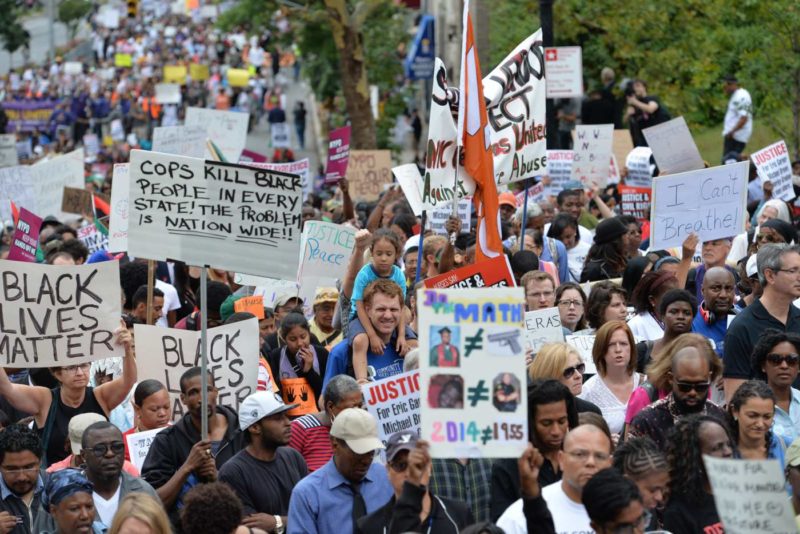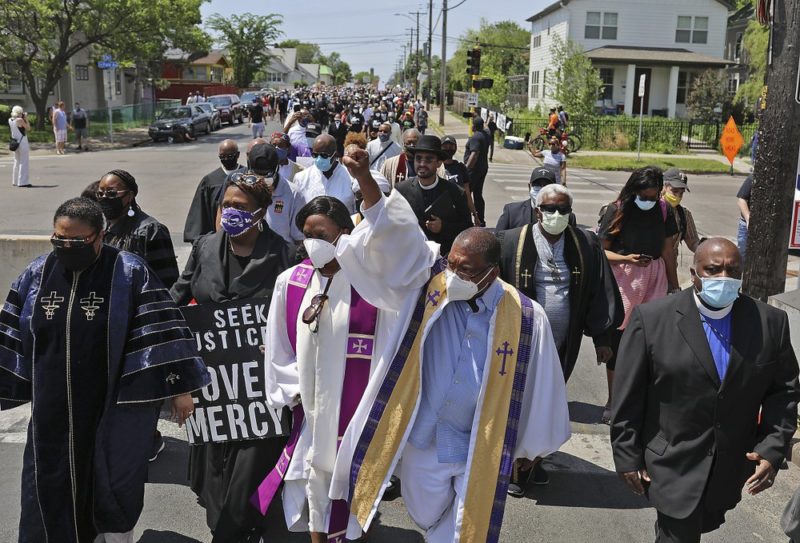Special News Series: Rising Up For Justice! – More US churches are committing to racism-linked reparations
Share
Explore Our Galleries
Breaking News!
Today's news and culture by Black and other reporters in the Black and mainstream media.
Ways to Support ABHM?
Introduction To This Series:
This post is one installment in an ongoing news series: a “living history” of the current national and international uprising for justice.
Today’s movement descends directly from the many earlier civil rights struggles against repeated injustices and race-based violence, including the killing of unarmed Black people. The posts in this series serve as a timeline of the uprising that began on May 26, 2020, the day after a Minneapolis police officer killed an unarmed Black man, George Floyd, by kneeling on his neck. The viral video of Floyd’s torturous suffocation brought unprecedented national awareness to the ongoing demand to truly make Black Lives Matter in this country.
The posts in this series focus on stories of the particular killings that have spurred the current uprising and on the protests taking place around the USA and across the globe. Sadly, thousands of people have lost their lives to systemic racial, gender, sexuality, judicial, and economic injustice. The few whose names are listed here represent the countless others lost before and since. Likewise, we can report but a few of the countless demonstrations for justice now taking place in our major cities, small towns, and suburbs.

To view the entire series of Rising Up for Justice! posts, insert “rising up” in the search bar above.
More US churches are committing to racism-linked reparations
By David Crary, Associated Press
December 13, 2020

NEW YORK (AP) — The Episcopal Diocese of Texas acknowledges that its first bishop in 1859 was a slaveholder. An Episcopal church in New York City erects a plaque noting the building’s creation in 1810 was made possible by wealth resulting from slavery.
And the Minnesota Council of Churches cites a host of injustices — from mid-19th century atrocities against Native Americans to police killings of Black people — in launching a first-of-its kind “truth and reparations” initiative engaging its 25 member denominations.
These efforts reflect a widespread surge of interest among many U.S. religious groups in the area of reparations, particularly among long-established Protestant churches that were active in the era of slavery. Many are initiating or considering how to make amends through financial investments and long-term programs benefiting African Americans…
The initiative, envisioned as a 10-year undertaking, is distinctive in several ways. It engages a diverse collection of Christian denominations, including some that are predominantly Black; it will model some of its efforts on the Truth and Reconciliation Commission that operated in South Africa after the end of apartheid; and it is based in Minneapolis, where the police killing of George Floyd in May sparked global protests over racial injustice…
Another notable aspect of the Minnesota initiative is that it seeks to address social justice concerns of African Americans and Native Americans in a unified way,
“For so long these have been two separate camps — Indigenous people and African Americans felt they are competing against each other for the same limited resources,” said the Rev. Jim Bear Jacobs, a Native American who is the church council’s director of racial justice…
Jacobs belongs to a Wisconsin-based Mohican tribe but was born in Minnesota and is well-versed in the grim chapters of the latter’s history regarding Native Americans. He cited the U.S.-Dakota War of 1862, which ended with the internment of hundreds of Dakota people and the hanging of 38 Dakota men in Mankato — the largest mass execution in U.S. history. After the war, many of the Dakota were expelled from the state.
Read the full article here.
More Breaking News here.
Explore the ABHM galleries here.









Comments Are Welcome
Note: We moderate submissions in order to create a space for meaningful dialogue, a space where museum visitors – adults and youth –– can exchange informed, thoughtful, and relevant comments that add value to our exhibits.
Racial slurs, personal attacks, obscenity, profanity, and SHOUTING do not meet the above standard. Such comments are posted in the exhibit Hateful Speech. Commercial promotions, impersonations, and incoherent comments likewise fail to meet our goals, so will not be posted. Submissions longer than 120 words will be shortened.
See our full Comments Policy here.